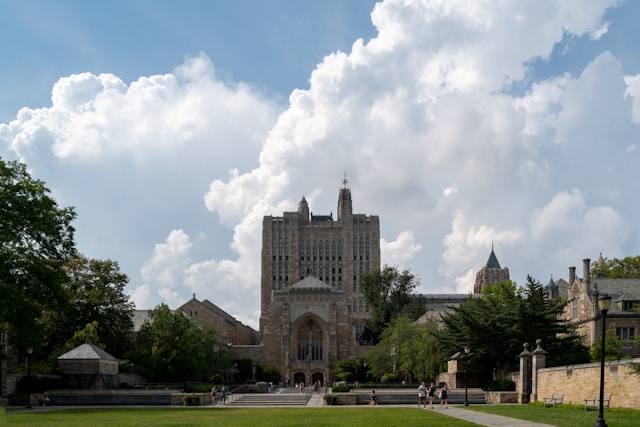This article highlights urgent concerns from neighboring Rhode Island. Officials there warn that a prolonged federal government shutdown could leave 140,000 residents without SNAP benefits after November 1.
The issue is unfolding outside Connecticut, but the ripple effects could be significant for communities from Hartford to Norwich. Many folks rely on interstate food networks and charitable support that cross state lines.
Explore top-rated stays with no booking fees and instant confirmation. Your dream trip starts here!
Start Exploring Now
Rhode Island Governor Dan McKee and House Speaker Joe Shekarchi have sounded the alarm. They say the state can’t afford to keep funding the $30 million monthly SNAP cost without federal aid, which raises real fears about food insecurity and economic strain in the wider region.
Connecticut residents should pay attention. Disruptions in one New England state often spill over, impacting resources, partnerships, and the non-profits we all depend on.
Impact of a Federal Shutdown on Food Assistance
The Supplemental Nutrition Assistance Program (SNAP) serves as a lifeline to thousands of families across the Northeast, including in Bridgeport, New Haven, and Waterbury. A federal shutdown interrupts the funding stream for these programs and puts both state budgets and households under pressure.
Rhode Island’s warning is a reminder: even if Connecticut’s SNAP benefits stay funded for now, disruptions next door can affect food distribution networks, regional food banks, and charitable organizations that operate across state lines.
Governor McKee stressed that Rhode Island doesn’t have the resources to cover the federal shortfall beyond a few weeks. House Speaker Shekarchi pointed out that federal reimbursement isn’t a sure thing this time, especially for Democratic-led states—a political wrinkle that just adds to the uncertainty.
Closer to Home: Connecticut’s Potential Exposure
Right now, SNAP benefits for Connecticut residents—from Stamford to Danbury—aren’t in immediate danger. Still, if disruptions drag on, our food security infrastructure could take a hit.
Organizations like Connecticut Foodshare rely on coordinated efforts with food banks throughout New England. If Rhode Island’s food banks start drawing down their stockpiles to fill the gap, that could mean less surplus for Connecticut communities.
If other states face SNAP expiration, struggling households might look to nearby states for help. Cities such as Norwalk and Torrington could see sudden spikes in demand on local pantries and nonprofits.
SNAP Funding: The Numbers and the Limits
Rhode Island’s leadership says the cost of SNAP benefits there runs at about $30 million per month. Connecticut’s SNAP budget is much larger, thanks to a bigger population, but the principle’s the same—no state can shoulder these expenses for long without federal dollars.
McKee mentioned a “partnership strategy” with community organizations to provide weekly assistance. Without certainty on reimbursement, though, these are only short-lived solutions.
Why Connecticut Should Watch Rhode Island’s Experience
Past shutdowns have allowed states to recoup costs, but this time, political differences might complicate things. Connecticut leaders in places like Middletown and Hamden should keep a close eye on what’s happening next door.
SNAP is federally funded, so when one state hits a funding wall, that can quickly become our problem too.
Rhode Island’s Department of Human Services (DHS) confirmed October benefits were safe. But November could be a real turning point if Washington stays gridlocked.
Connecticut officials need to prepare contingency plans for our own residents if federal delays drag out nationwide.
Preparedness and Community Response
For residents, staying informed is crucial. Keep SNAP paperwork up to date, and know your alternative food support options in case of disruptions.
Community leaders in Greenwich and Meriden already work closely with local food banks, faith-based groups, and volunteers. These relationships become especially critical during funding crises.
Potential action items include:
- Maintain up-to-date SNAP documentation so benefits can restart quickly when funding resumes.
- Connect with local food banks in your city or town before a crisis peaks.
- Monitor official DHS updates for both Rhode Island and Connecticut, since interstate cooperation affects resources.
- Build municipal emergency food reserves by working with local grocers.
Looking Ahead
Rhode Island’s immediate SNAP challenge might sound like someone else’s problem. But let’s be honest—Connecticut shares food supply chains and depends on nonprofit networks, so we can’t just shrug it off.
Maybe you’re in Hartford or Norwalk. Either way, the reality hits home: what happens nearby can ripple through our own neighborhoods.
As the shutdown drags on or (hopefully) wraps up, Connecticut’s policymakers and residents need to keep an eye out. We’ve got to stay informed and work together if we want to support our neighbors and protect our own food security.
Here is the source article for this story: Rhode Island SNAP benefits on brink of running out as government shutdown continues
Find available hotels and vacation homes instantly. No fees, best rates guaranteed!
Check Availability Now








